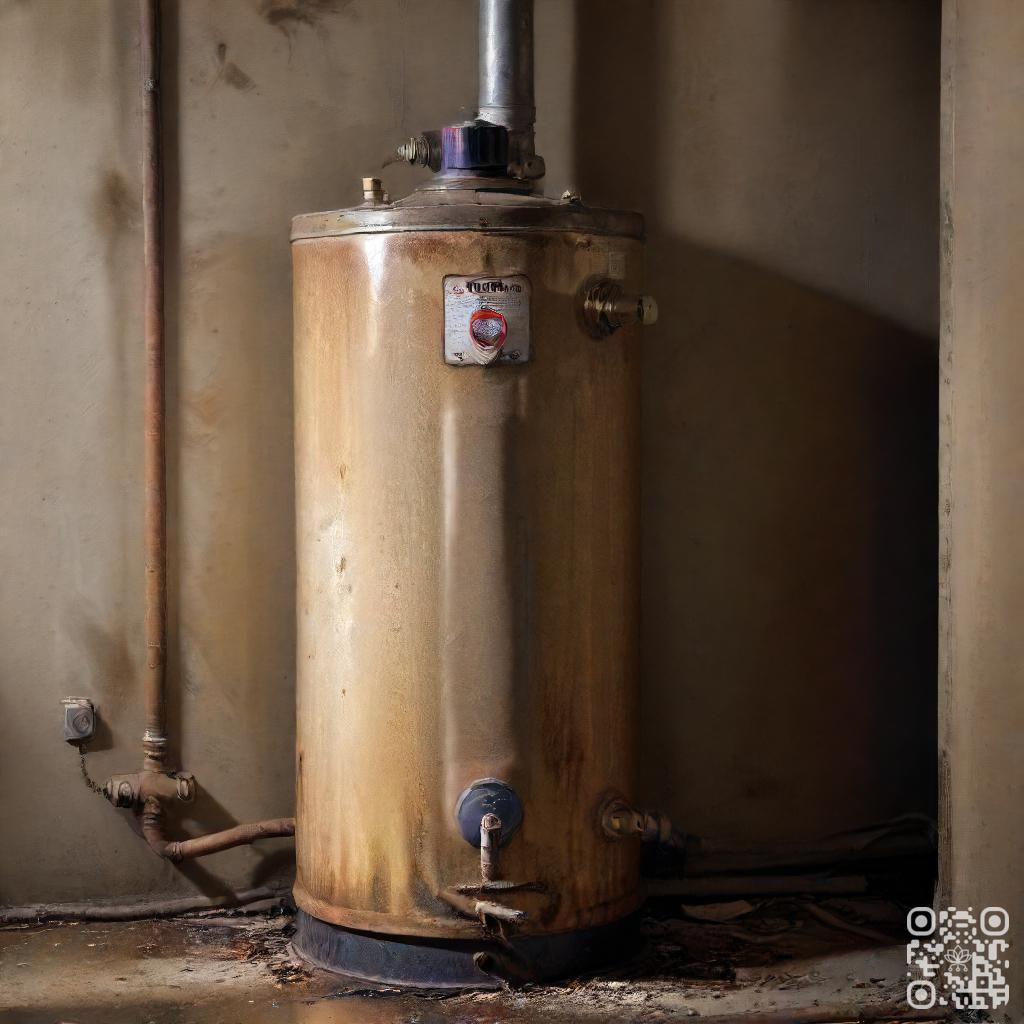
Regular maintenance is crucial to keep your water heater running efficiently. One important aspect of maintenance is flushing your water heater.
Flushing removes sediment and mineral buildup that can affect the performance and lifespan of your water heater. Signs that your water heater needs flushing include decreased hot water pressure, strange noises coming from the tank, and discolored water.
By flushing your water heater regularly, you can ensure optimal performance and prolong its lifespan.
Decreased Hot Water Supply
In this section, we will navigate the issue of decreased hot water supply and discuss how sediment build-up can affect it. We will also provide steps to check for and address this problem.
1. Sediment Build-Up and its Impact
One of the common reasons for decreased hot water supply is the build-up of sediment in your water heater. Over time, minerals and debris can accumulate at the bottom of the tank, creating a layer of sediment. This sediment acts as an insulator, preventing the efficient heating of water and reducing the overall hot water supply.
To address this issue, it is essential to understand the signs of sediment build-up. These signs may include a decrease in hot water pressure, longer heating time, or even rusty water coming out of the taps. If you notice any of these indicators, it is likely that sediment build-up is affecting your hot water supply.
2. Steps to Check for Decreased Hot Water Supply
To check for decreased hot water supply due to sediment build-up, follow these steps:
- Turn off the power: Before inspecting your water heater, ensure that the power is turned off to avoid any accidents.
- Locate the drain valve: The drain valve is usually located near the bottom of the water heater. Attach a hose to it and place the other end in a suitable drain or bucket.
- Open the valve: Open the drain valve to release a small amount of water. If you notice a significant amount of sediment coming out with the water, it is a clear indication of sediment build-up.
- Repeat the process: If necessary, repeat the draining process a few times to ensure thorough removal of sediment.
- Refill and restart: Once the sediment has been drained, close the valve, remove the hose, and refill the tank. Restart the water heater and check if the hot water supply has improved.
| Signs of Sediment Build-Up | Steps to Address the Issue |
|---|---|
| Decreased hot water pressure | Turn off the power |
| Longer heating time | Locate the drain valve |
| Rusty water | Open the valve |
Strange Noises
In terms of your water heater, strange noises can be quite concerning. These noises are often caused by sediment build-up, which can lead to various issues with your water heater’s performance. In this section, we will traverse the explanation behind how sediment build-up causes strange noises and provide you with steps to identify these noises.
1. Clarification of how sediment build-up causes strange noises
Sediment build-up occurs over time in your water heater due to the accumulation of minerals and debris in the tank. As water is heated, these sediments settle at the bottom of the tank and form a layer. When the water heater is in operation, the heat causes the water to bubble and move, leading to the movement of the sediment layer. This movement can create a range of strange noises, such as rumbling, popping, or even banging sounds.
These noises are indicative of a problem with your water heater and should not be ignored. Ignoring these noises can lead to further damage to your water heater and potential leaks or malfunctions.
2. Steps to identify strange noises coming from the water heater
If you are experiencing strange noises coming from your water heater, indispensable to take the following steps to identify the source of the issue:
- Step 1: Listen closely to the noises and try to identify their specific characteristics. Are they loud or faint? Do they occur during specific times, such as when the heater is heating up or shutting off?
- Step 2: Check for any visible signs of sediment build-up, such as discolored water or debris in the tank.
- Step 3: Inspect the water heater’s components, such as the pressure relief valve, drain valve, and heating elements, for any signs of damage or malfunction.
- Step 4: Consider seeking professional help if you are unable to identify the source of the strange noises or if you suspect a more serious issue with your water heater.
Discolored Water
Discolored water can be a cause for concern as it may indicate the presence of sediments or contaminants. Perceiving how sediment affects water color is crucial in identifying potential issues and ensuring the safety of your water supply.
1. Clarification of how sediment affects water color
Sediment, such as dirt, minerals, or organic matter, can enter the water supply through various sources, including natural erosion, aging infrastructure, or construction activities. These particles can give the water a cloudy or discolored appearance.
When light passes through the water, it interacts with the suspended particles, scattering and absorbing certain wavelengths. This scattering effect causes the water to appear turbid or discolored, ranging from brown, yellow, or even greenish hues.
2. Steps to check for discolored water
If you notice a change in your water’s color, it is essential to investigate the cause and take appropriate actions. Here are the steps to help you check for discolored water:
- Visual Inspection: Observe the water in a clear glass or container to determine its color and clarity. Note any unusual discoloration or particles present.
- Run Cold Water: Let the cold water run for a few minutes and observe if the discoloration persists. If the water clears up, it may indicate that the issue is within your household plumbing.
- Contact the Water Provider: If the discoloration persists or affects multiple faucets, it is recommended to contact your water provider. They can provide guidance and arrange for further testing if necessary.
- Follow Recommendations: If advised by the water provider, you may need to flush the system or take additional measures to address the issue. It is crucial to follow their recommendations to ensure the safety of your water.

Foul Odor
Water odor can be a nuisance, especially when it carries a foul smell. Sediment buildup is one of the primary causes of this unpleasant odor in water. Mastering how sediment affects water odor is crucial in identifying and resolving this issue. Additionally, knowing the steps to identify a foul odor coming from the water heater can help in finding a solution.
1. Sediment and Water Odor
Sediment refers to particles that settle at the bottom of water heaters or other water sources. These particles can come from various sources, such as minerals, dirt, or rust. When sediment accumulates, it creates an environment for bacteria to grow, leading to a foul odor in the water.
To tackle sediment-related water odor, it is essential to regularly flush and clean the water heater. Flushing the heater helps remove the accumulated sediment and prevents bacterial growth, ultimately eliminating the foul odor.
2. Identifying Foul Odor from the Water Heater
If you notice a foul odor specifically coming from your water heater, there are a few steps you can take to identify the source of the problem:
- Check for visual signs: Inspect the water heater for any visible signs of sediment buildup or corrosion. These signs can indicate the presence of a foul odor.
- Run hot water: Turn on the hot water faucet and let it run for a few minutes. Smell the water to determine if the foul odor is present in the hot water specifically.
- Compare with cold water: Run cold water from a different source and compare the odor. If the foul odor is only present in the hot water, it is likely an issue with the water heater.
Once you have identified that the foul odor is coming from the water heater, it is recommended to consult a professional plumber. They can further inspect the heater, clean it thoroughly, and provide any necessary repairs.
Dealing with a foul odor in your water can be unpleasant, but by apprehending the role of sediment and following the steps to identify the source, you can effectively address the issue. Regular maintenance and professional assistance can help ensure that your water remains fresh and odor-free.
| Topic | Information |
|---|---|
| Sediment and Water Odor | – Sediment buildup leads to foul odor – Regular flushing and cleaning prevent bacterial growth |
| Identifying Foul Odor | – Check for visual signs – Run hot water and compare with cold water – Consult a professional plumber |

Leaks
1. Interpretation of how sediment build-up causes leaks
In regard to leaks in plumbing systems, sediment build-up is often a major culprit. Sediment, which includes minerals, dirt, and debris, can accumulate in pipes over time and lead to leaks. This build-up occurs mainly in older plumbing systems or in areas with hard water.
The sediment can cause corrosion or rusting of metal pipes, weakening them and creating small holes or cracks. Additionally, the build-up can restrict the flow of water, increasing pressure on the pipes and causing them to leak.
Regular maintenance and cleaning of pipes can help prevent sediment build-up and minimize the risk of leaks. Flushing the pipes periodically and using water softeners or filters can reduce the amount of sediment entering the plumbing system.
2. Steps to check for leaks
Detecting leaks in your plumbing system is crucial to prevent water damage and save on water bills. Here are some steps you can take to check for leaks:
- Monitor your water meter: Turn off all water sources in your home and check if the meter is still running. If it is, there might be a hidden leak.
- Inspect visible pipes and fixtures: Look for any signs of water stains, dampness, or dripping around pipes, faucets, and toilets.
- Perform a dye test: Add a few drops of food coloring to your toilet tank and wait for around 30 minutes. If the color appears in the bowl without flushing, there might be a leak in the toilet.
- Check for water pressure changes: Sudden drops in water pressure could indicate a leak in the plumbing system.
Regularly checking for leaks and addressing them promptly can help prevent costly repairs and water wastage. If you suspect a leak but are unable to locate it, it is recommended to seek professional assistance from a licensed plumber.
| Fact | Data |
|---|---|
| Average water wasted due to leaks in households | Approximately 10,000 gallons per year |
| Common signs of a hidden leak | Increased water bills, mold or mildew growth, musty odors |
| Cost of water damage repairs | Varies depending on the extent of damage, but can be significant |
Bottom Line
Flushing your water heater is an essential maintenance task that can help extend its lifespan and improve its efficiency. Signs that your water heater needs flushing include discolored or foul-smelling water, strange noises, and reduced hot water supply. It is recommended to flush your water heater at least once a year, but the frequency may vary depending on the quality of your water and usage. Flushing your water heater can be done by a professional or DIY, but indispensable to follow the manufacturer’s instructions and safety precautions. Neglecting to flush your water heater can lead to sediment buildup, corrosion, and even failure. Don’t wait until it’s too late, schedule a water heater flush today to ensure your hot water supply is clean and efficient.
Read More:
1. Steps For Flushing An Electric Water Heater
2. What Tools Are Needed For Flushing A Water Heater?











